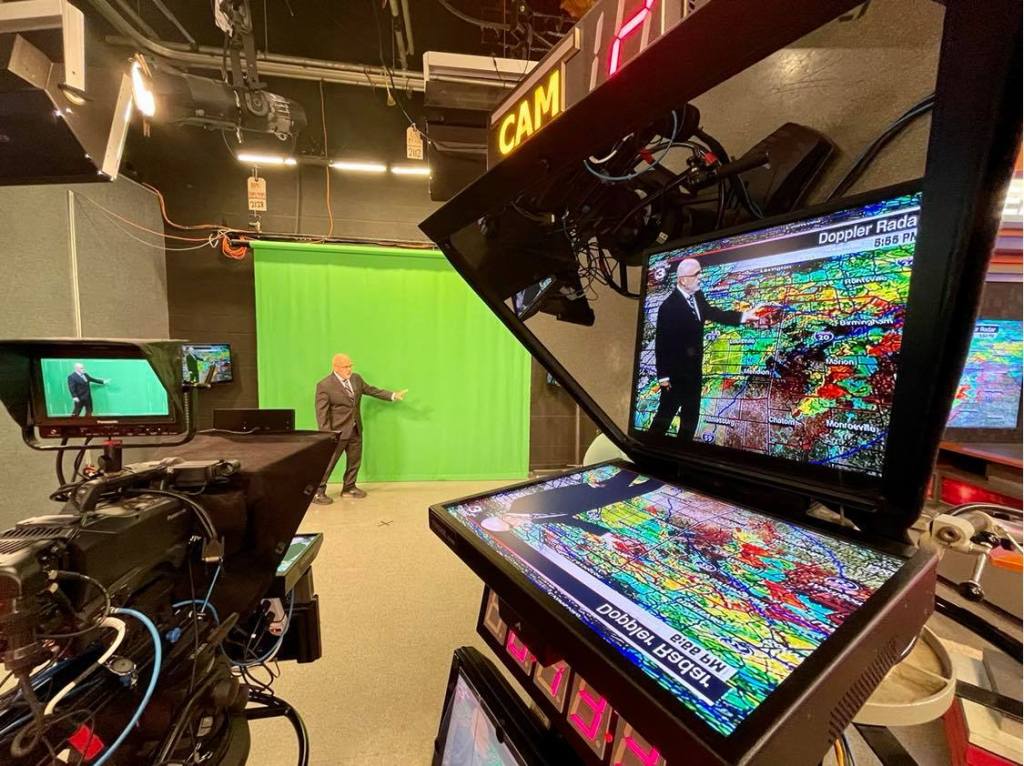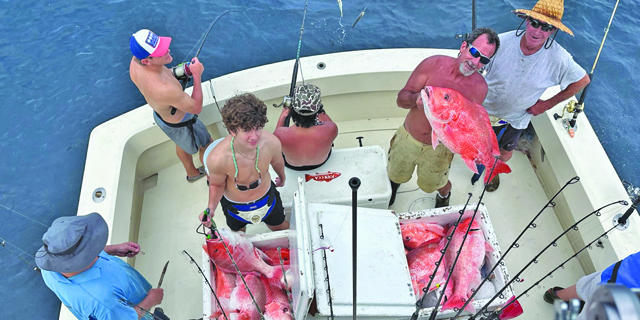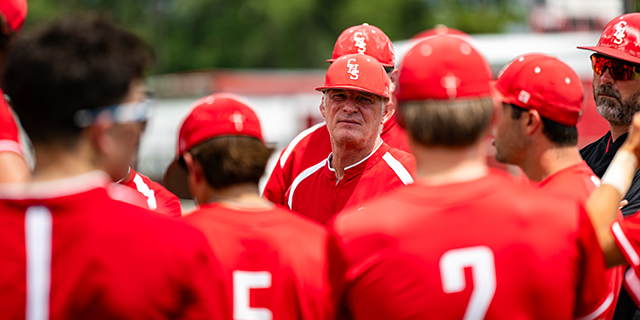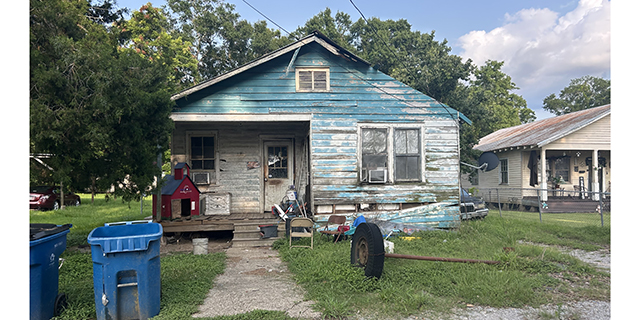KATC-TV3’s Rob Perillo is the go-to guy for weather. See what he has to say about hurricane season 2021.
Published 8:00 am Friday, June 11, 2021

- 185227041_2896156960602223_3649906521173133667_n.jpg
There’s that one weatherman in every market who is the guy, the one whose name is as synonymous with the local forecast as Coke is to soft drinks. It’d be safe to say that KATC TV-3’s Rob Perillo owns that place in the Acadiana market.
“That’s only because I outlasted everyone else,” he says with a self- deprecating chuckle. “But really, it’s an honor.”
After 33 years on the air in Lafayette, he’s seen it all, from no-name storms that have flooded the region to Category 5 hurricanes which threatened the entire Gulf coast. But that doesn’t necessarily make predicting the way the next storm will behave any easier. “Now, even non-named storms are more of a threat,” Perillo says. “They are moving slower, which means they are dropping more rain over the area.”
Subsequently the old standby of judging how severe the impacts of a weather event will be by the category of the storm has changed. “Once we get into the tropical season, every storm can be a threat,” Perillio says. “Take the August 2016 flood, for example. That storm was actually a tropical depression. But it stayed in place and didn’t move, just dumping rain on the area. If it were moving at a quick pace, it may have been just a breezy day.”
A lot of those insights and the trends he has observed over the last three decades have been captured in a new exhibit at the Lafayette Science Museum. Although it was completed a year ago, the COVID-driven closure of the museum prevented the exhibit from being seen until the facility reopened last month. “We were just finishing it up last February and March,” he says. “It was set to go on April first, then the pandemic hit. We’ve been champing at the bit to open it up.”
The exhibit is a joint effort between the museum and KATC, with Perillo’s hurricane coverage notes providing a framework for the presentation. “The museum put it together, physically built the exhibit,” Perillo explained. “We put together some of the climate information. I had a whole PowerPoint I had put together that was updated for the 2020 season. So that was my part of it.”
To leave his contribution at that, however, would be too modest. Unlike many television weathermen who get their certification after getting the job, Perillo was a bona fide meteorologist, providing weather updates for various industries before his career turned to television. “Most serious meteorologists thought that television was a ‘sell out’ job,” he says with a laugh. “I got in just because I was looking for better hours.”
His initial job was providing weather forecasts for nuclear power plants, before moving to a weather consulting firm in Houston, which provided information to the petrochemical industry. He then moved to a private company, providing weather forecasts for aviation. “I did lots of work for NASA,” Perillo says.”I got to talk to just about every NASA pilot. We provided space shuttle support up to the Challenger explosion.”
Although it may sound exciting, it was also a grinding schedule. “We were on shift hours,” Perillo says. “When you are doing worldwide weather, it goes on 24 hours a day.
“So that’s how I got into it,” he continues. “Honestly, it’s much more fun as a television forecaster. You get feedback, people call and write, so you see the fruits of your labor. When you are giving forecasts to a pilot, you may never hear from them again.”
That doesn’t mean that his television career choice didn’t come with additional responsibilities, as well. “I was up all night the other night, up all last night, and my shift today goes until 2 a.m.,” he says after a rain-filled week in May. “At least we have something to talk about.”
There’s also the additional demand of being “That Guy.” Perillo says, “My phone number is out there, so I get a lot of calls from people I don’t even know at all hours of the day. Lots of people like to show off that they know Rob Perillo, so they will call to see what the weather will be for their golf tournament or the next festival.”
Perillo himself can often be found at those same festivals. An avid music fan, many people have had the dubious pleasure of realizing the man next to them singing with gusto during a live show is Perillo on his night off.
“I played keys when I was younger,” he says “I took 10 years of classical piano lessons. I played in a few bands late in high school and early college. It was good for me. I miss being creative.”
That penchant made for an easier decision to become the region’s forecaster all those years ago. “That’s the draw,” Perillo says. “This area is so rich in culture, from artistry to music to visual arts.”
He has also helped to enrich that culture through his children, who are both active in the arts scene. “My daughter is a visual artist, my son is a musician,” he says. “Olivia is a filmmaker. She’s done a couple of short films, one longer form documentary. Now she is looking for her next project, finding grants.”
Son Joseph is finishing up at UL. “He’s midway through a music media degree and got a new collaboration going during the pandemic, recorded an album,” Perillo says.
And, although he laments not having taken the arts route himself, Perillo has been able to apply his creativity to his craft in forecasting. He says that there are some new tricks up his sleeve that may come into the public eye soon. “We are constantly working to build better projects,” he says. “We’ve got some good stuff coming.”
Perillo says that the change in ownership of the station has also helped to bring new resources to the forecasting table. “I’m lucky that Scripps is committed to weather,” he says. They have 61 stations, so we’re on their mind all the time. They actually worry about the news and the weather product. It’s very nice to have that corporate support.”
Rob’s Forecast for 2021
After the onslaught that was the 2020 hurricane season, Rob Perillo can understand if there is some storm fatigue – and apprehension – in the Acadiana region. “Coming off of last year, everyone has anxiety about the coming season,” he says. “Nobody wants to hear about hurricane season.”
And they are likely less enthused when they hear his message for the 2021 season. “Well, I’m just telling you, it looks like it’s going to be busy,” Perillo says.
The shift in intensity of hurricane seasons has been gradual, but consistent. Even if many of them never see landfall, the number of storms has continued to grow each year, Perillo says. “Statistically speaking, we’re looking at up to 20 named storms, with eight hurricanes, four major. Before, we’d see 14, seven and three. It used to be 12, six and two.”
Perillo was quick to point out that the number of storms may be intimidating, but it is where those storms land that matters. “It only takes one, but last year we had four or five,” he says. “Hopefully we’re not in a pattern that favors those storms coming into the Gulf of Mexico.”
Although many storms of late have been more rain-driven events, slower moving but with less wind damage, last year’s Hurricane Laura was of a different sort. “Laura was really an outlier in the amount of wind damage,” Perillo says. “There were three post storm surveys before Delta. I was amazed that we had three areas that had winds equal to an EF-2 tornado. But a tornado only lasts minutes. Those 130-mile-an-hour winds went on for hours.”





